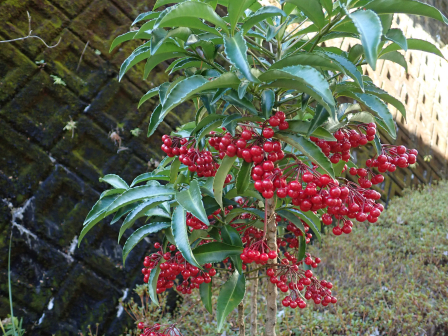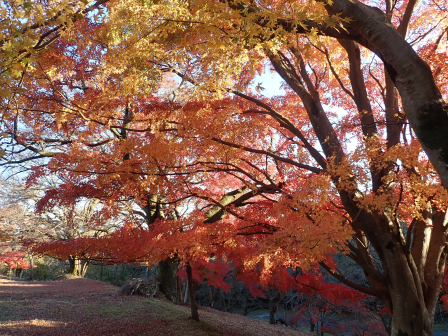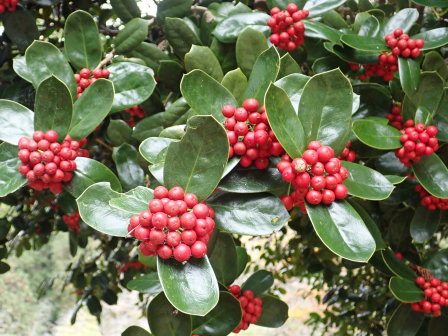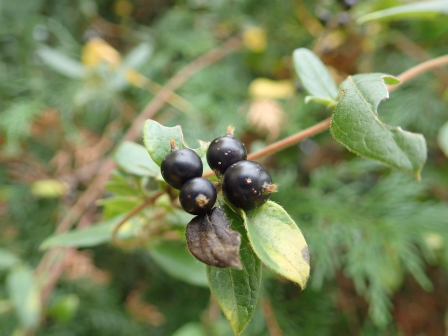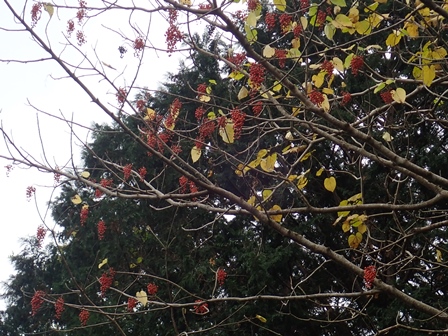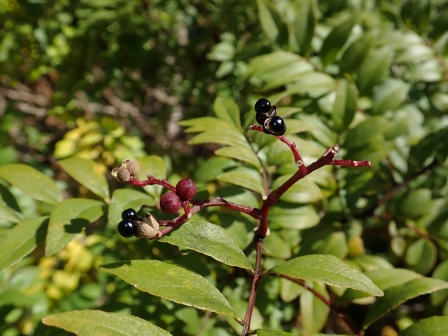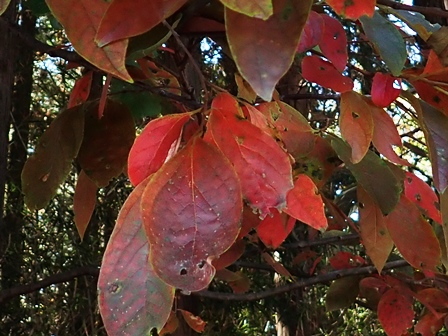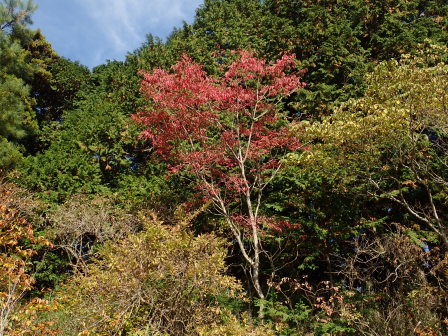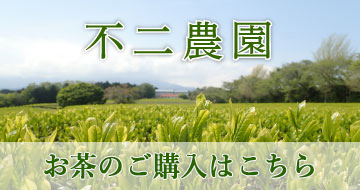フィールド日記
2022.12.23
マンリョウ
マンリョウの実が赤く色づいています。つやのある赤い実を多数つけることから、縁起の良い植物として知られています。植栽されることが多いですが、校内では鳥が運んだ種から発芽したと思われる個体があちこちで見られます。日本では縁起物とされていますが、アメリカのフロリダ州では園芸目的で持ち込まれた個体が広がり、侵略的外来種とされているようです。
The fruits of "Manryou (マンリョウ)" trees are turning red. They are well-known as lucky trees because they bear a lot of shiny red berries. They are often planted, however on our campus, you can find the trees here and there that have probably grown from the seeds that birds dropped. In Florida, America, they are considered as an invasive alien species because the trees brought in for horticultural purposes have spread, although they are considered as lucky trees in Japan.
2022.12.20
イロハモミジ
ススキ野原のイロハモミジが紅葉していました。最も普通に見られるカエデで、よく植栽もされています。不二聖心には多くのイロハモミジの木がありますが、それぞれ紅葉するタイミングが少しずつ違っていて、長く紅葉を楽しむことができます。
"Iroha-Momiji (イロハモミジ)" trees are turning autumn colors in the Japanese pampas grass field. They are the most common maple trees in Japan and they are often planted. We have many "Iroha-Momiji" trees on campus and each tree turns autumn colors at a slightly different timing, so we can enjoy their autumn colors for a long time.
2022.12.16
ヒイラギモチ
校舎裏でヒイラギモチの木がたくさんの赤い実をつけています。中国原産で、庭木などとして植栽されます。冬につける赤い実はクリスマスの飾りに用いられます。不二聖心でもリース作りの材料として利用しています。
A "Hiiragi-Mochi (ヒイラギモチ)" tree is bearing many red berries behind the school building. They come from China and are sometimes planted in gardens. The red berries in winter are used for Christmas ornaments. In our school, we use this fruit for making Christmas wreaths.
2022.12.13
スイカズラ
グラウンドでスイカズラの果実が見られます。光沢のある黒い果実が2つずつつくのが特徴です。葉の一部は冬でも落葉しないで越冬することから忍冬(ニンドウ)とも呼ばれています。
"Suikazura (スイカズラ)" trees are bearing their fruits on the school ground. They are characterized by having two shiny black fruits on their branches in pairs. Some of their leaves don't fall and remain over the winter. That's why they are also called "Nindow (忍冬)".
2022.12.09
イチョウ
グラウンド横に植栽されているイチョウの黄葉が進んでいます。よく見ると、木によってはすでにほとんど葉を落としてしまったものや、ちょうど黄葉が見ごろのもの、まだ緑の葉も多く残っているものもあります。
"Ichou (イチョウ)" trees planted next to the schoolground are turning autumn colors. Looking closely, some trees have already lost most of their leaves, some are just starting to show yellow leaves, and some still have many green leaves.
2022.12.06
イイギリ
温情舎小学校の跡地の近くにイイギリの木があり、赤い実がなっています。イイギリは飯桐の意味で、葉が桐の葉に似ていて、昔、ご飯を包んだことに由来します。果実は秋ごろに赤く熟しますが、長く枝に残っています。
There is a "Iigiri" tree on the site of "Onjousha" elementary school and the tree is bearing its red fruits. The name comes from the facts that their leaves resemble the leaves of the"Kiri" tree and people in the past used their leaves for wrapping rice. The fruit ripen in fall but they last long on the trees.
2022.12.02
ヤブニッケイ
裏道のヤブニッケイに実がなっていました。ヤブニッケイはシナモンの仲間で、独特な香りがあり、葉や樹皮は薬用になります。学名はCinnamomum yabunikkeiで、和名がそのまま学名に使われており、日本に自生するシナモンであることがわかります。
A "Yabu-Nikkei (ヤブニッケイ)" tree is bearing its fruit on the back road. They belong to the group of cinnamon trees, so they have unique aroma. Their leaves and barks are used as a medicine. Their scientific name is "Cinnamomum yabunikkei", which includes its original Japanese name, so it indicates they are a cinnamon that originally grows in Japan.
2022.11.29
イヌザンショウ
第1オークヒルでイヌザンショウの木が見られます。香辛料として使われるサンショウに似ていて、あまり香りがよくないことからイヌザンショウと呼ばれているようです。果実は赤く熟したあと裂開し、写真のように黒い光沢のある種子が出てきます。
There are "Inu-Zanshou" trees in the First Oak Hill. They resemble "Sanshou (サンショウ)" trees that are used as a spice, but they don't smell as good as "Sanshou" trees, so they are called "Inu-Zanshou". When their fruits ripen, they open and the shiny black seeds come out from them as you can see in the photo.
2022.11.25
カキノキ
第2オークヒルのカキノキ(柿の木)が鮮やかな赤色に紅葉していました。カキノキは広く栽培されていますが、まれに林内に逸出したものが見られます。この木もおそらく動物によって運ばれた種から自然に生えてきたものと思われ、果実は小さく食用にはならなそうですが、葉は美しく紅葉していました。
The leaves of the persimmon tree in the Second Oak Hill are turning bright red. Persimmon trees are widely cultivated and occasionally escape into forests and grow there. This tree in the photo has probably grown from a seed that a wild animal dropped. The fruit of the tree is too small to eat, but the leaves have turned the beautiful autumn colors.
2022.11.22
リュウキュウハゼ
キャンパス内で様々な樹木の紅葉が見られます。第一オークヒルには数本のリュウキュウハゼ(ハゼノキ)があり、鮮やかな赤い葉がひときわ目を引きます。
We are enjoying autumn colors of various trees on our campus. There are several "Ryukyu-Haze (リュウキュウハゼ)" (or "Hazenoki (ハゼノキ)") trees in the first Oak Hill, and their bright red leaves are very beautiful.


